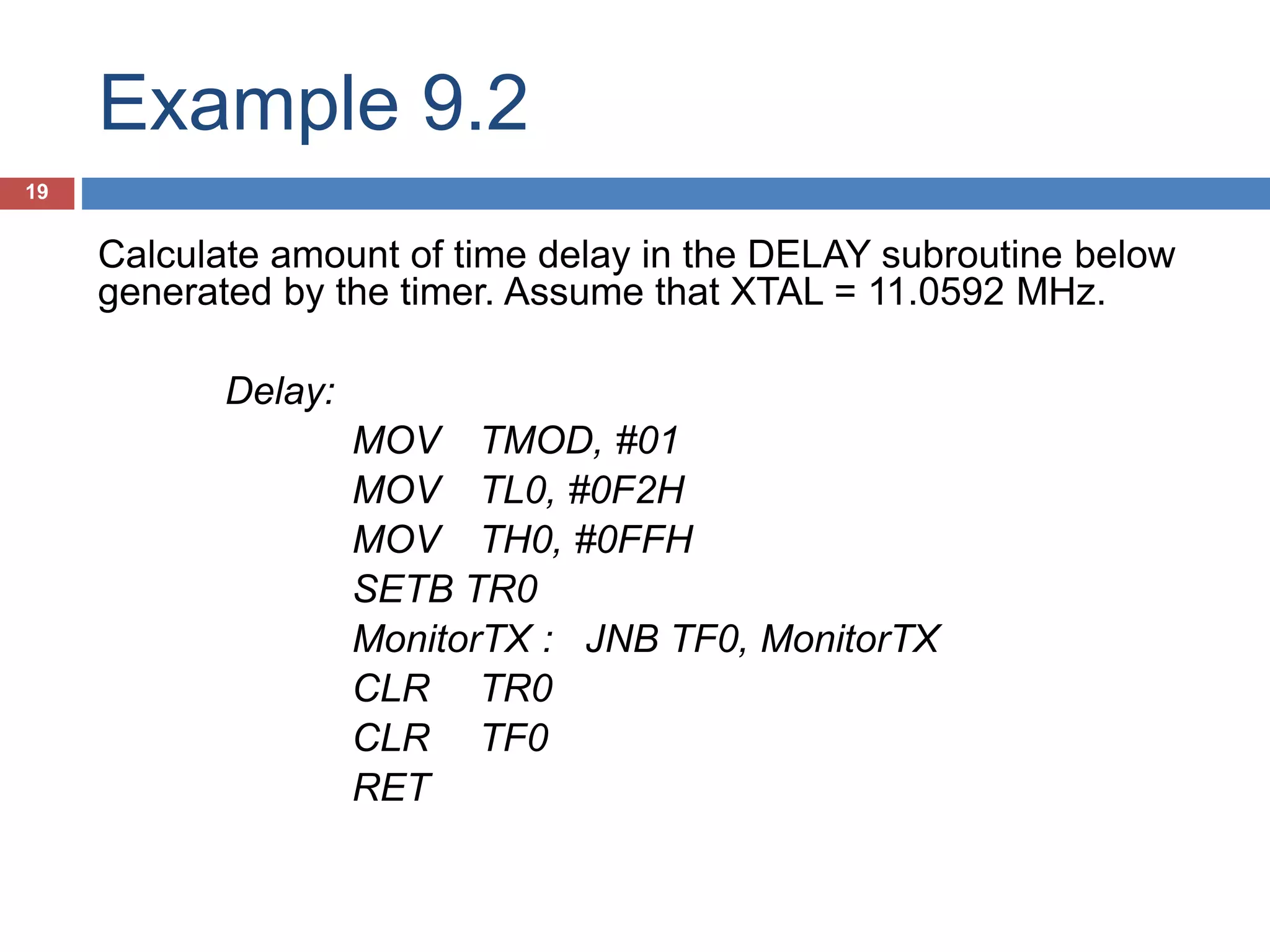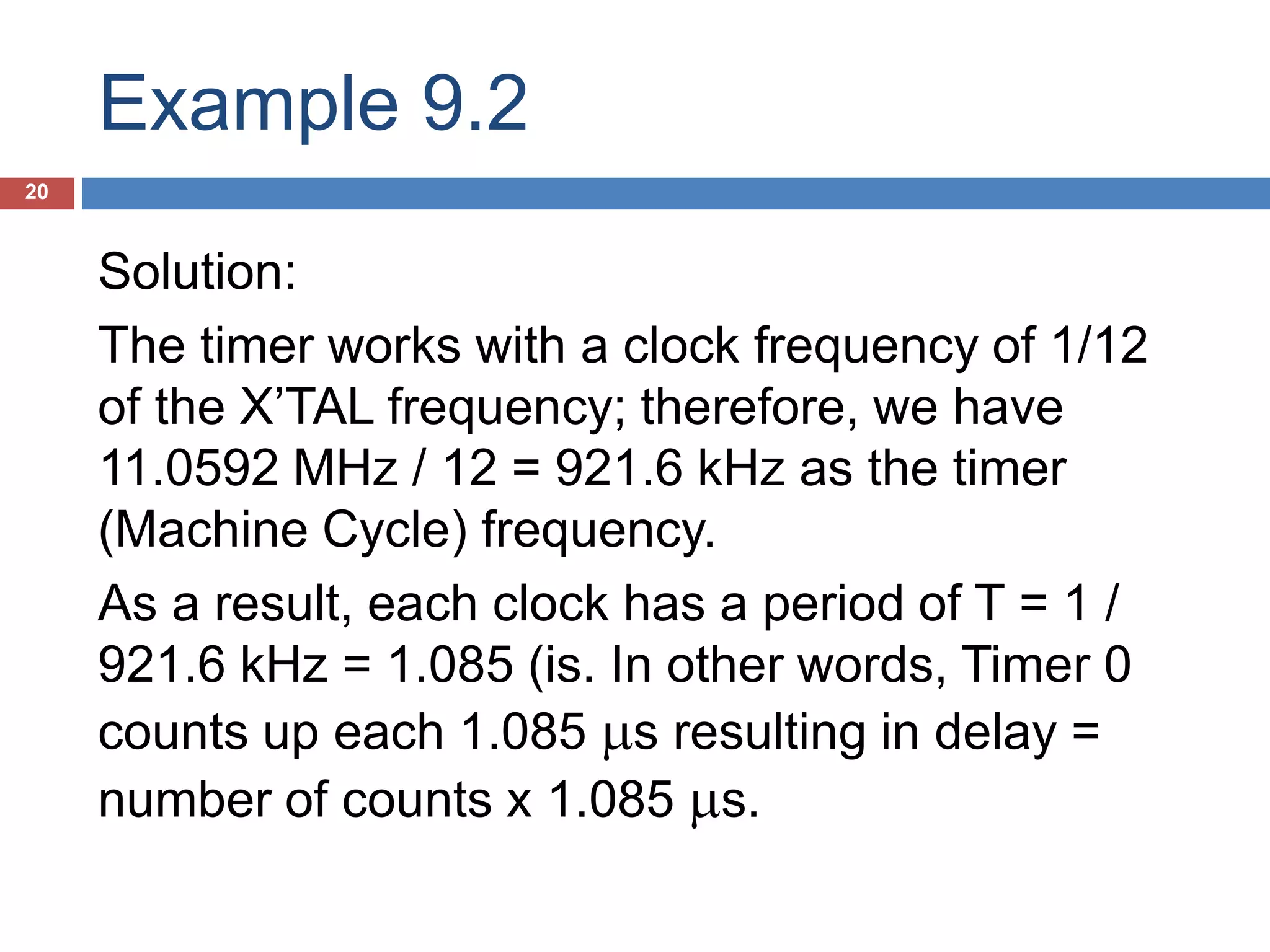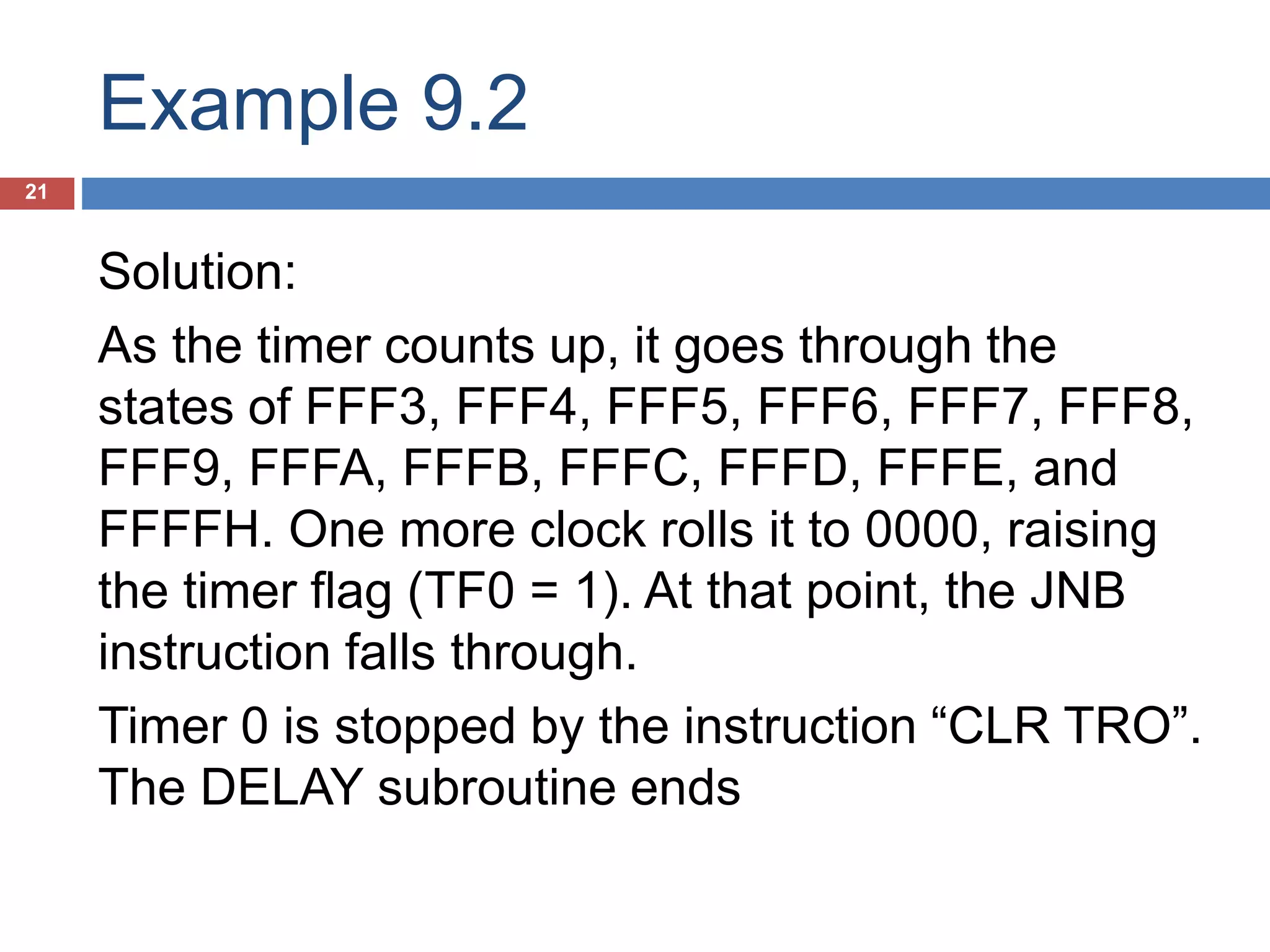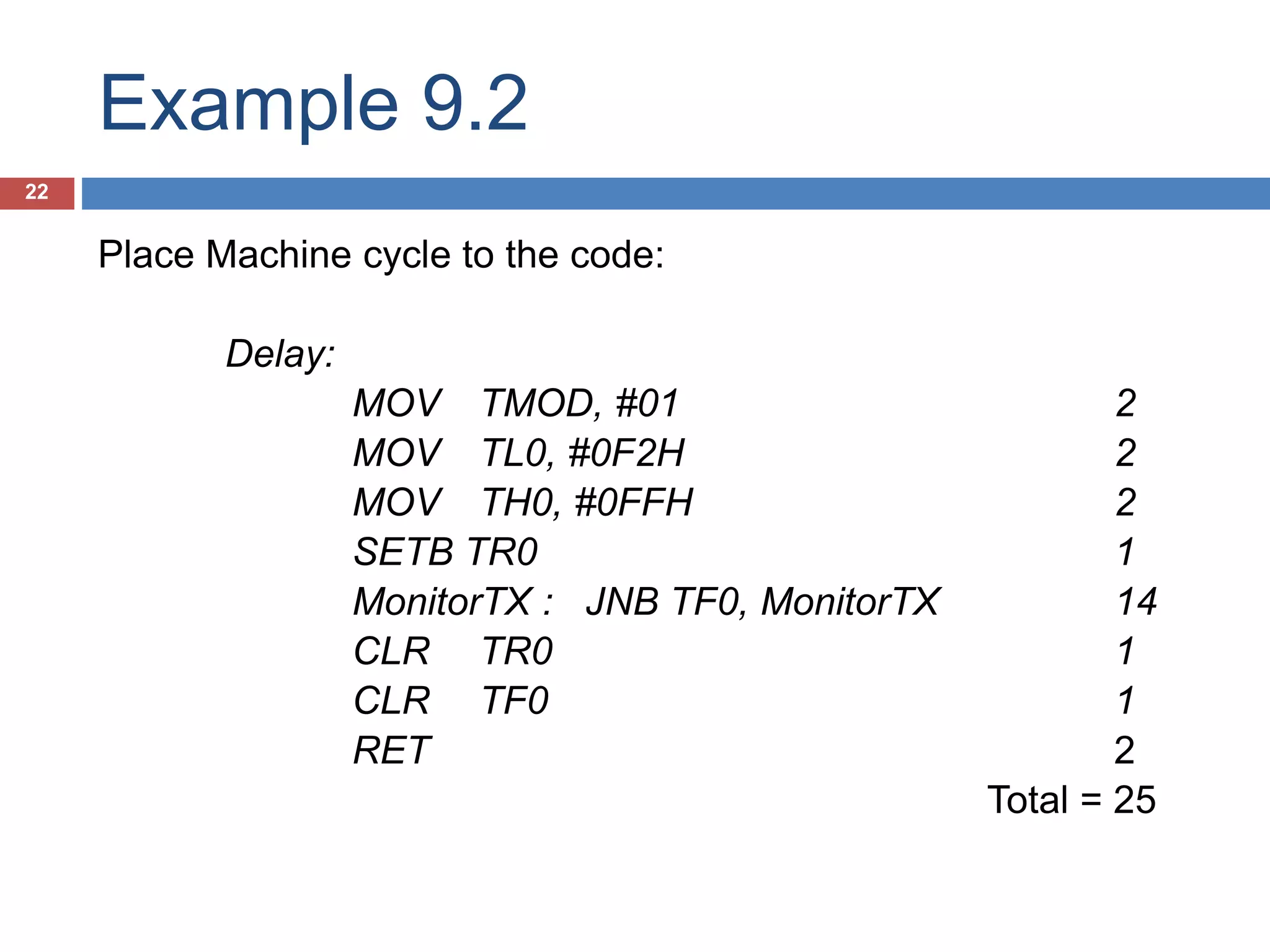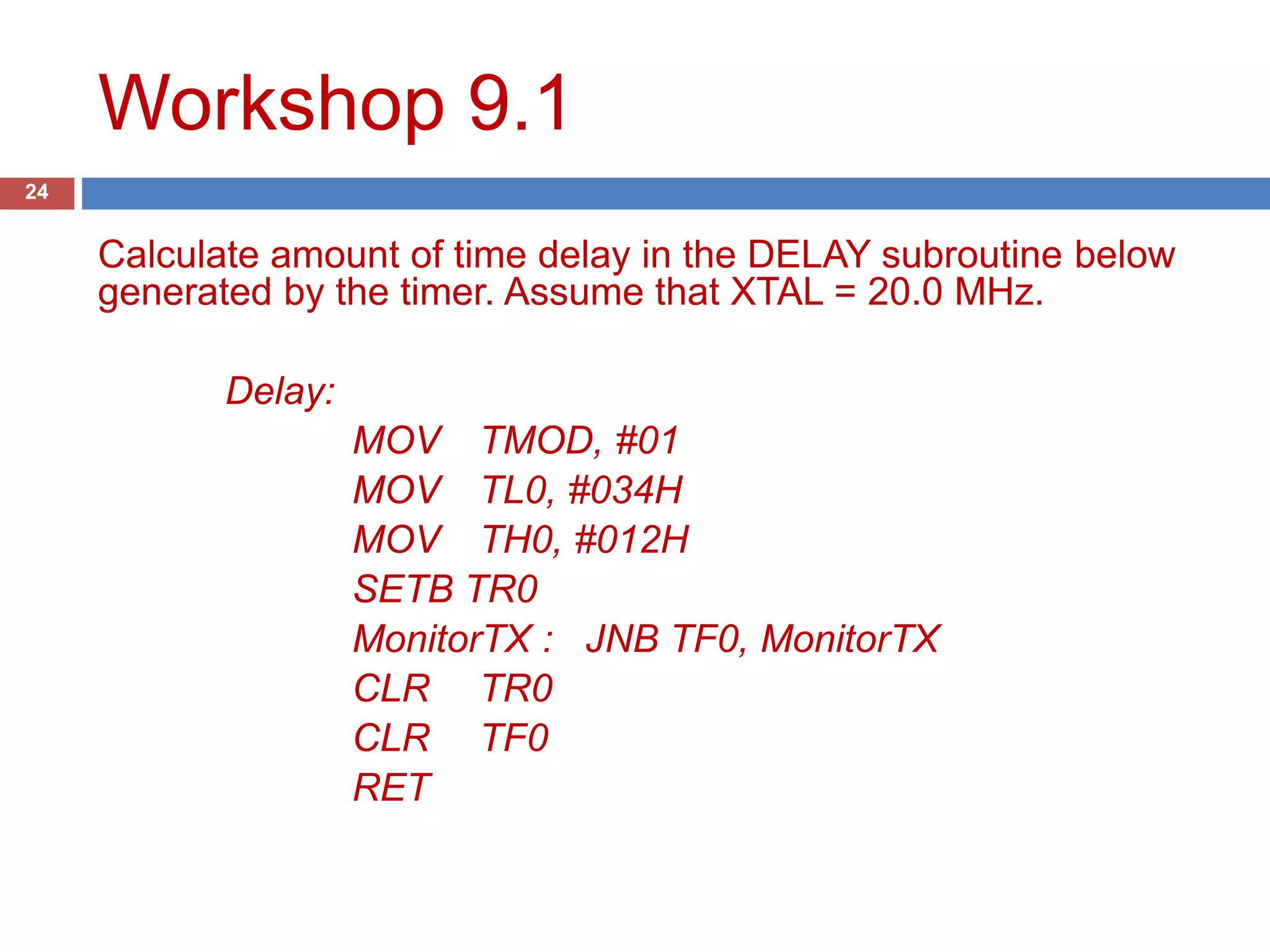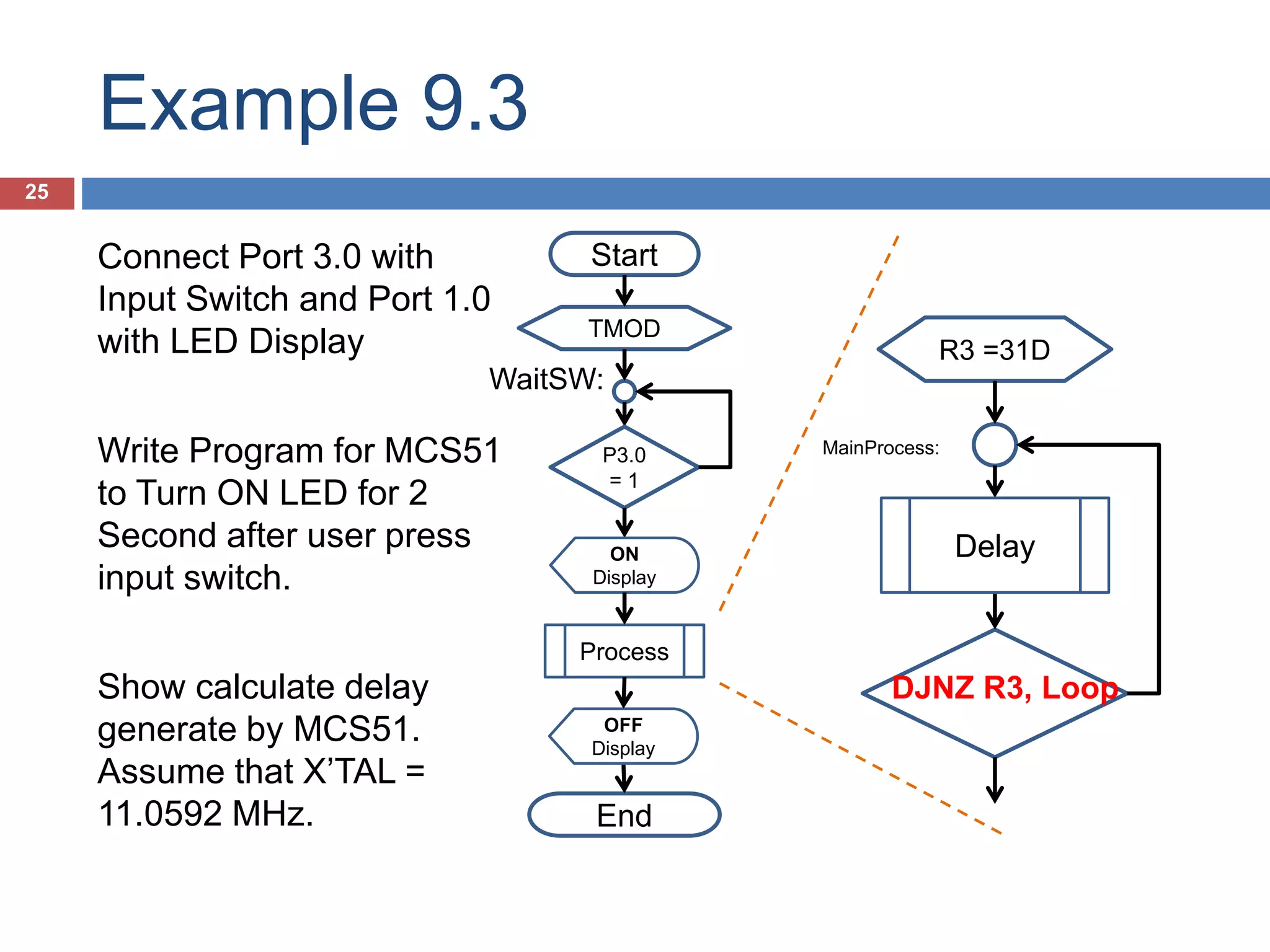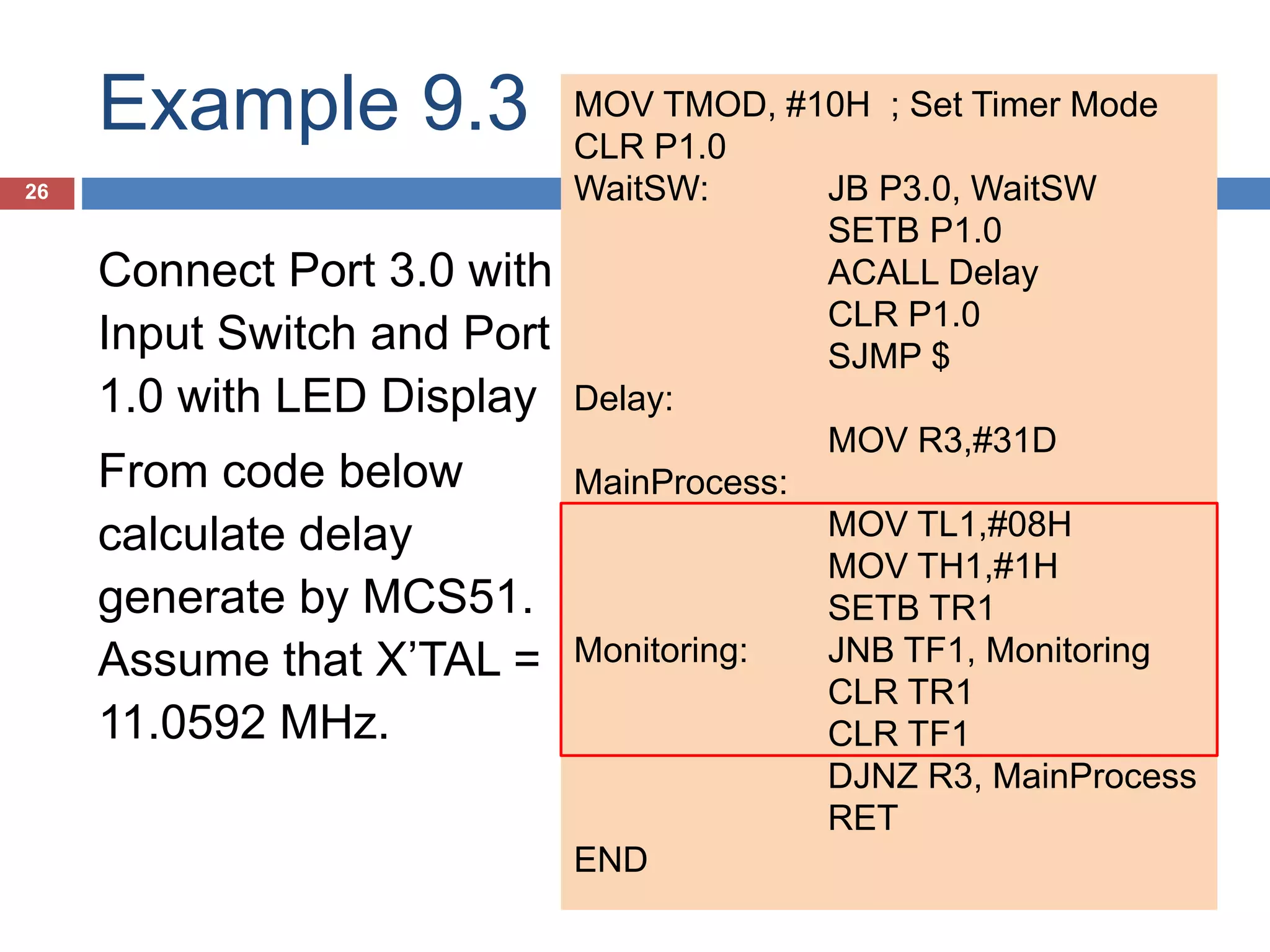The document discusses timers and counters on the MCS-51 microcontroller. It describes the timer registers TMOD, TCON, THx and TLx. It explains the four modes of the timers and how to set the mode using the TMOD register. Examples are provided to calculate delays generated by timers based on settings of the THx and TLx registers. Programming techniques like DJNZ are also demonstrated for repeated timing loops.


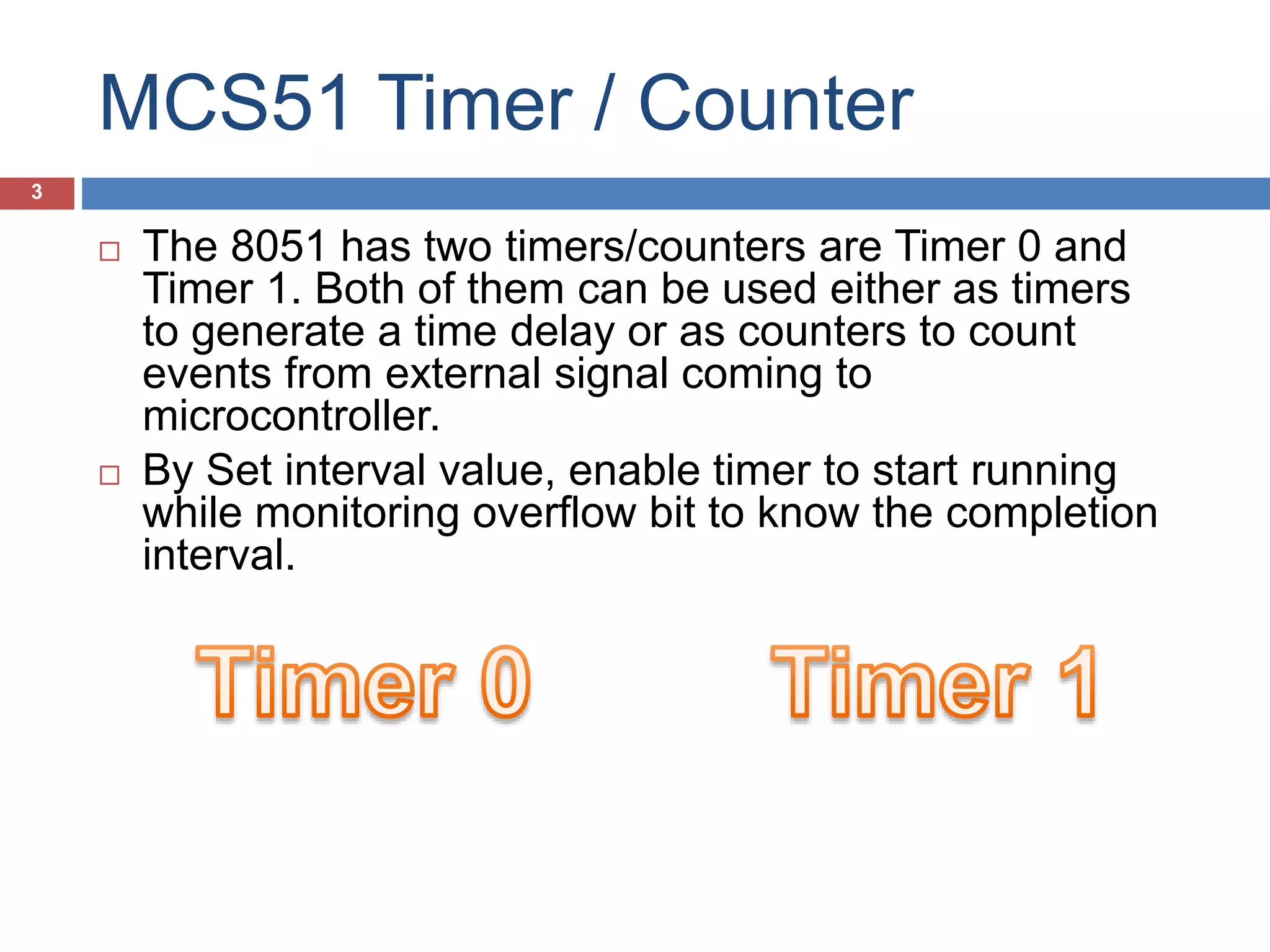

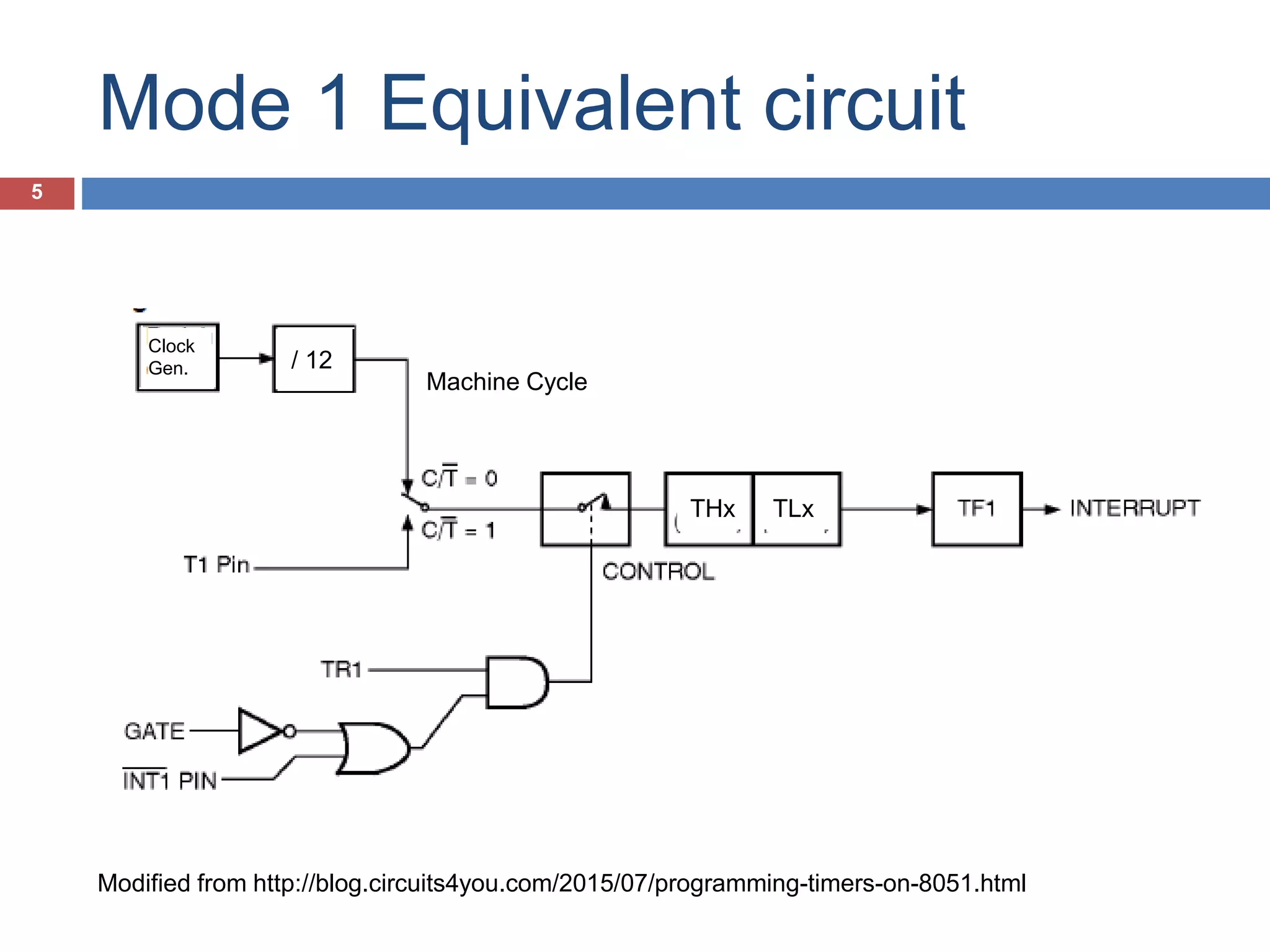


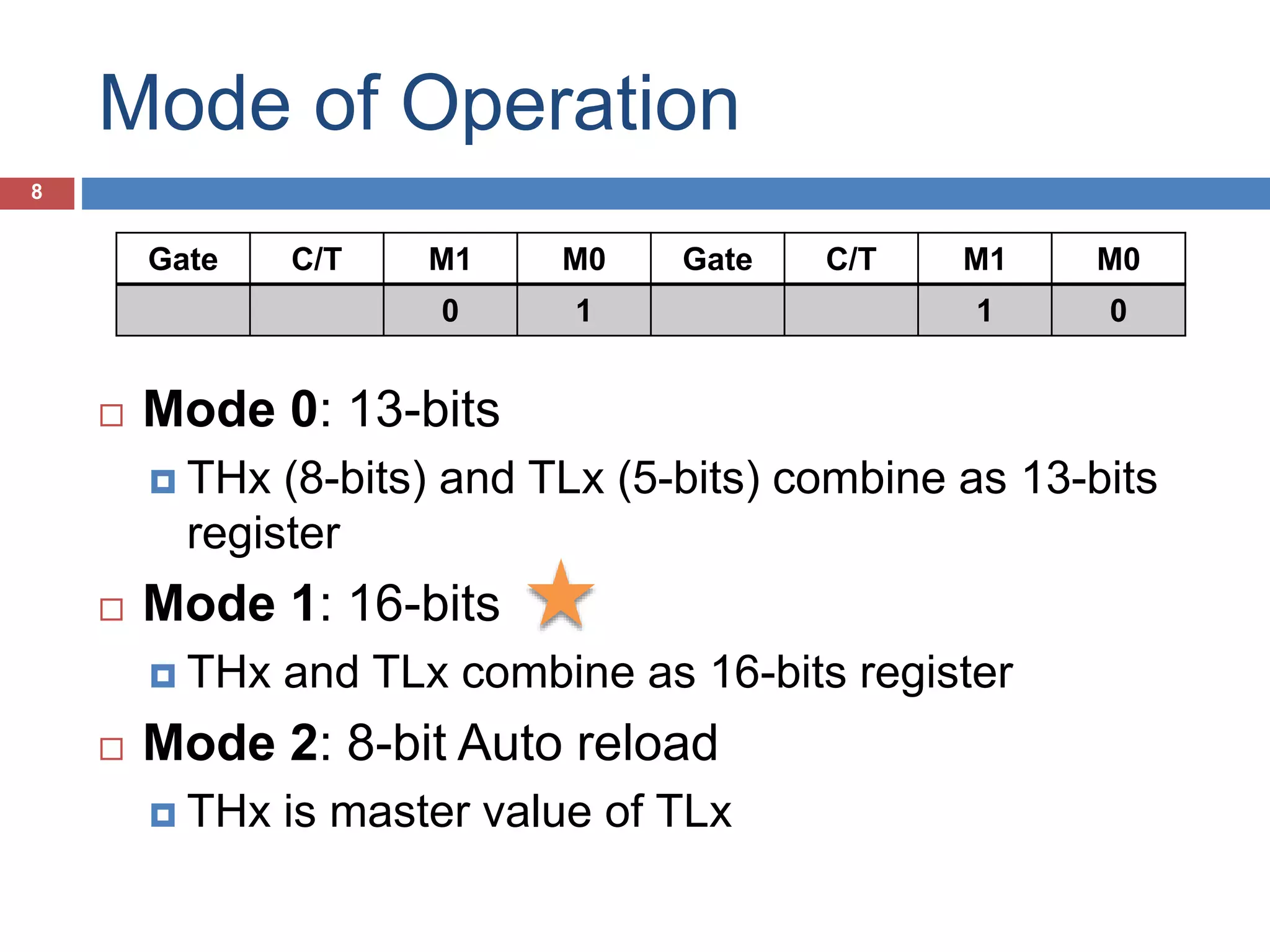



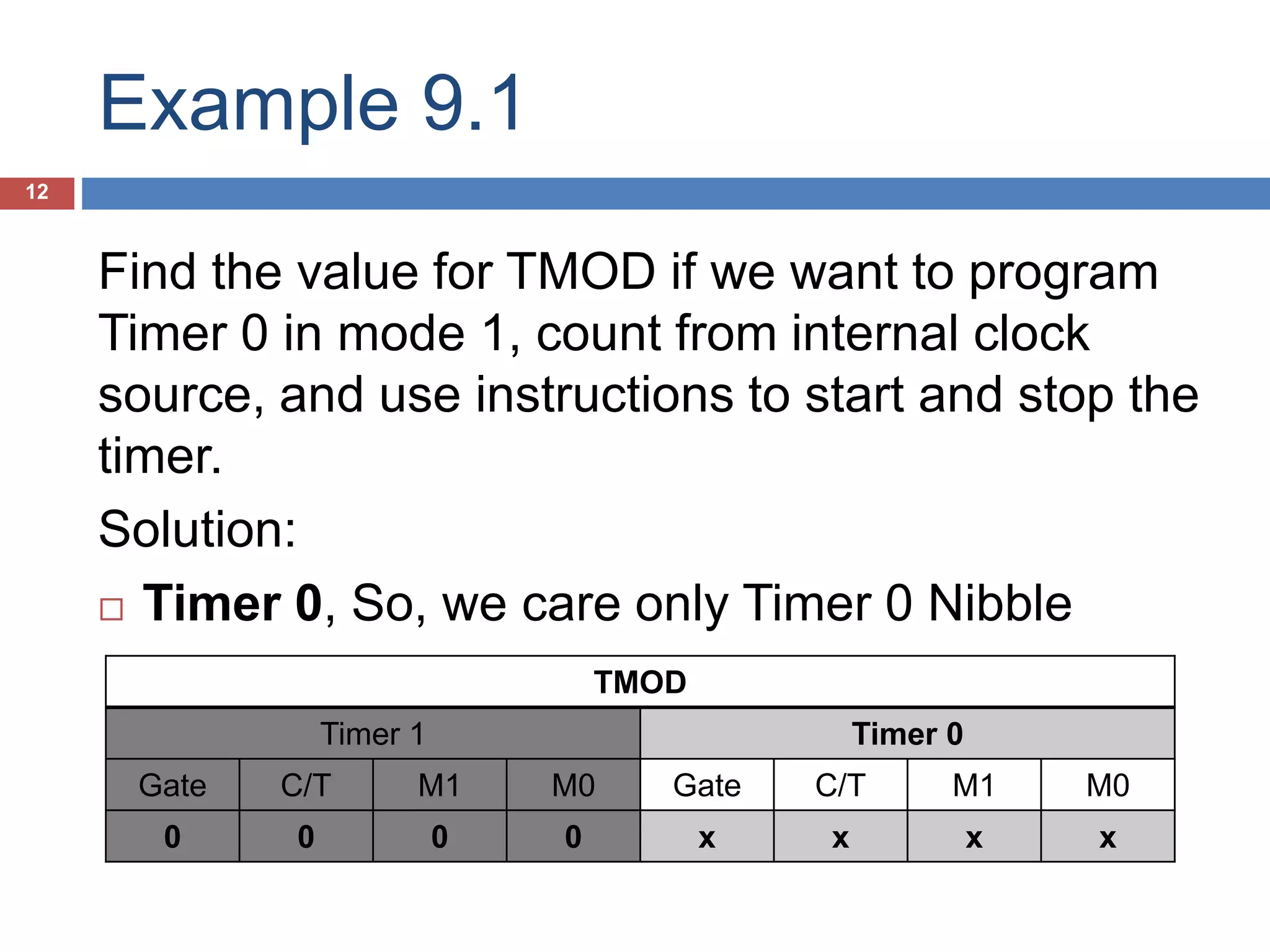
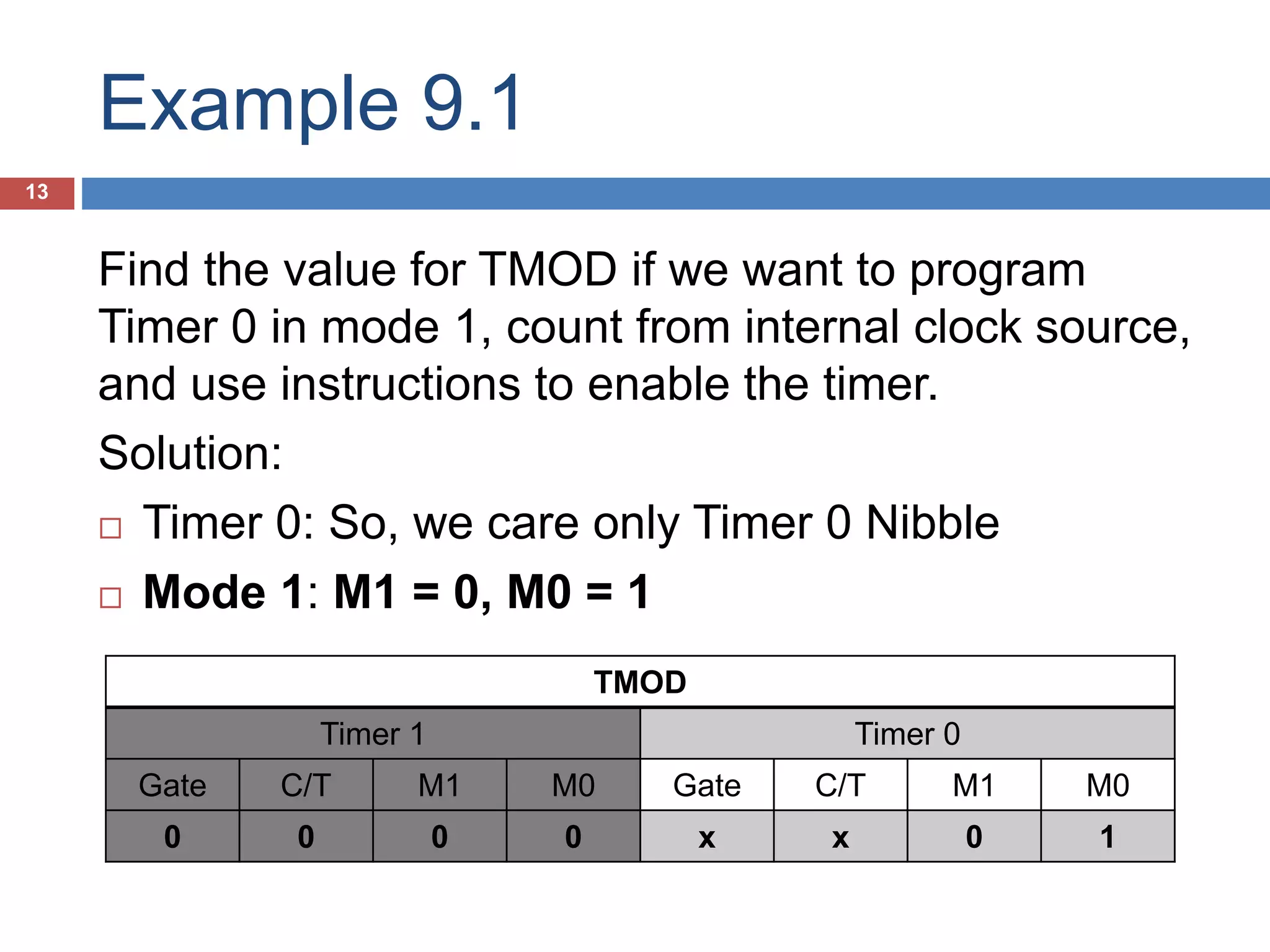
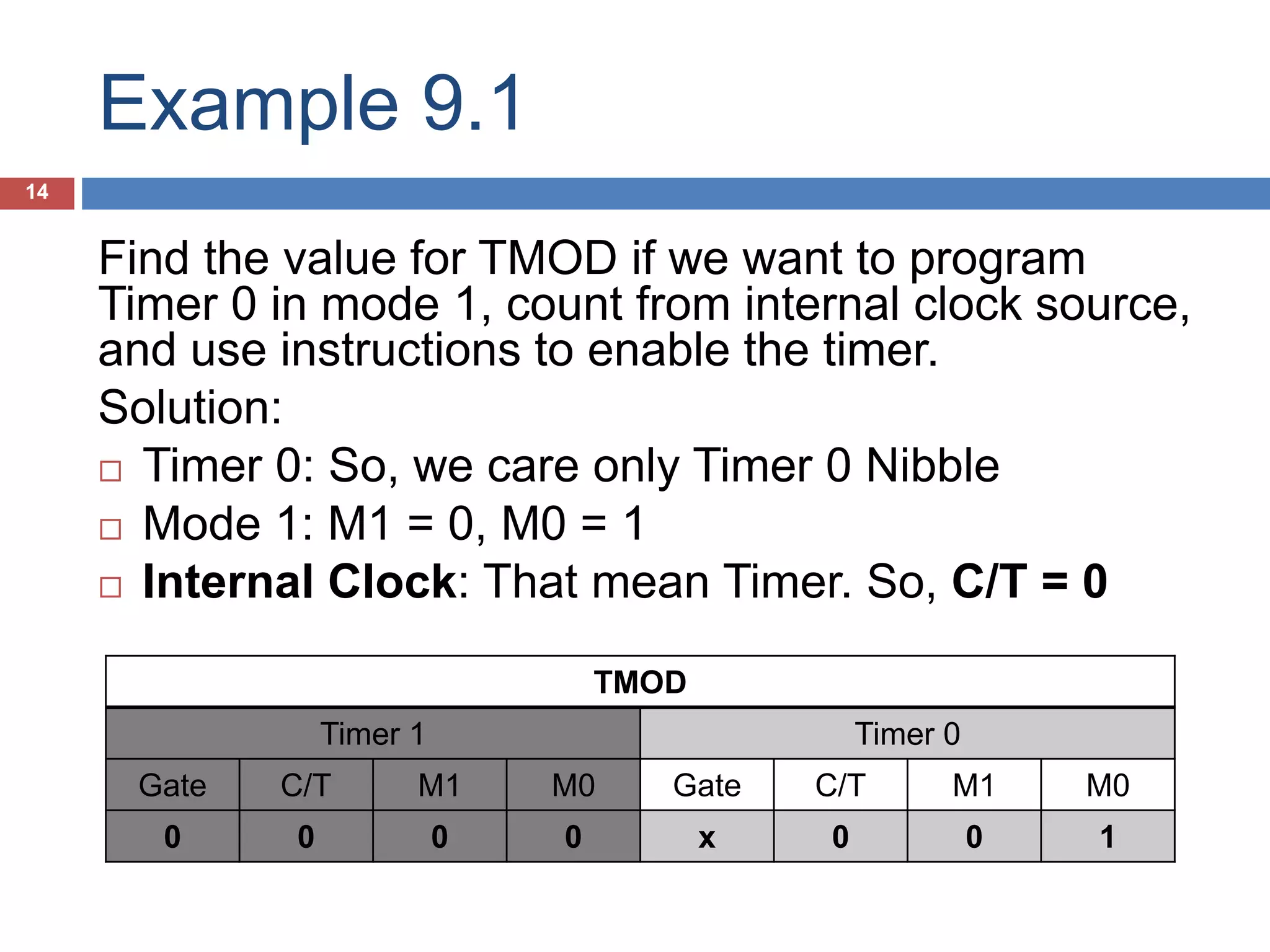
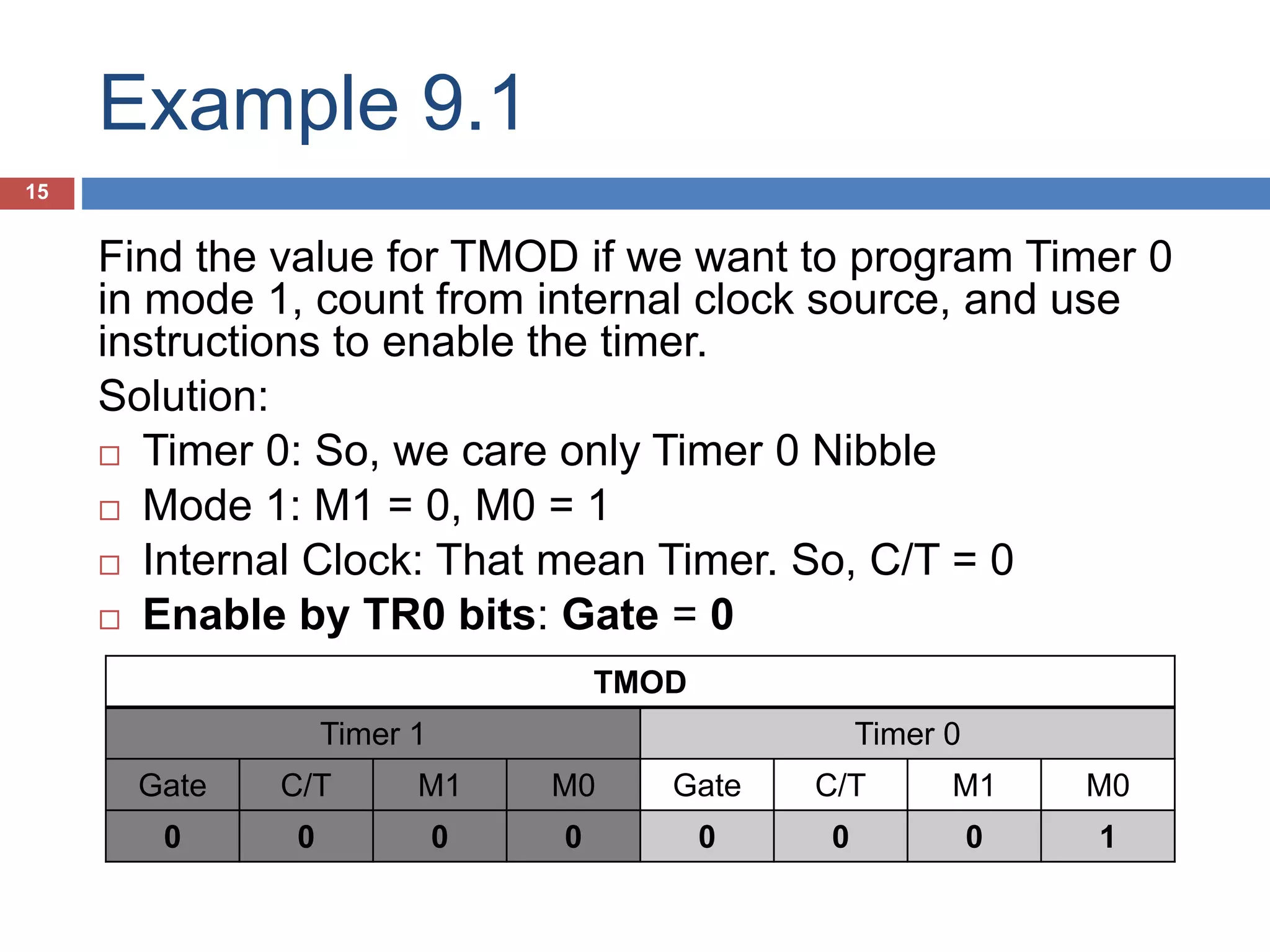


![Mode 1’s Operation 18 THx TLx 0 0 0 1 0 0 0 0 0 1 0 1 1 0 0 1 THx and TLx store start value Timer operation always count-up (increase) on [THx, TLX] each machine cycle SETB TRx instruction to start running timer Over flow when Increase FFFF to 0000 Interval value = FFFF – [TH,TL] FFFF give minimum interval time 0000 give maximum interval time Example: MOV TH0, #22H MOV TL0, #00H ; Then interval is FFFF – 2200 = DDFF Machine Cycle. Tips: Monitor TFx with instruction “MonitorLable : JNB TFx, MonitorLable”](https://image.slidesharecdn.com/timers08-160523171853/75/Microprocessor-Week-9-Timer-and-Counter-18-2048.jpg)
